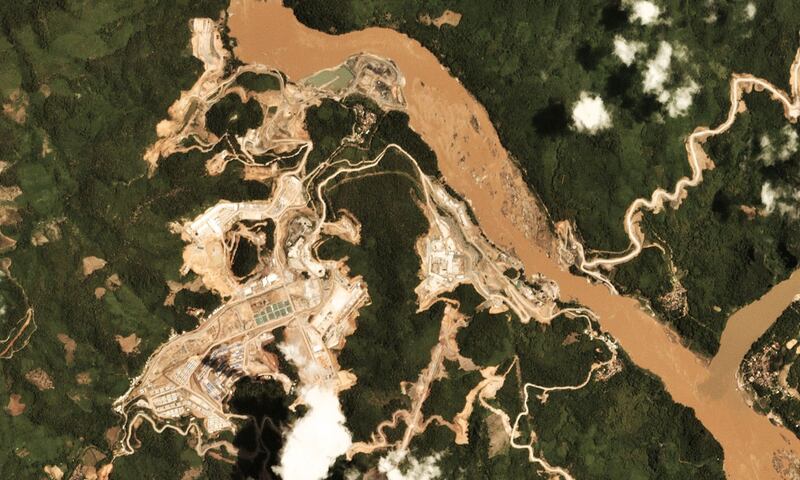A group of Thai and international organizations are urging the Thai government not to buy electric power from a major dam Laos is building on the Mekong River, saying that the dam’s operation will threaten the ancient Lao city of Luang Prabang, a UNESCO World Heritage Site.
The call comes ahead of a July 16-31 UNESCO World Heritage Committee meeting scheduled to consider the impact of the 1,460 megawatt, U.S. $3 billion Luang Prabang Dam on protected areas.
The project will displace 581 families or 2,285 people and will affect 20 other villages in the northern Lao provinces of Luang Prabang and Oudomxay.
In a July 12 letter signed by six organizations and ten individuals, the group noted that work on the dam has already begun, reminding both the Thai government and the dam’s Thai-owned developer, the Ch. Karnchang Company, that a required heritage impact assessment (HIA) has not yet been completed.
UNESCO has called the town of Luang Prabang "an outstanding example of the fusion of traditional architecture and Lao urban structures with those built by the European colonial authorities in the 19th and 20th centuries."
Luang Prabang celebrated its 25th anniversary as a World Heritage Site last year.
Speaking to RFA on July 12, a representative of one of the letter's signing groups pointed to the threats posed to the resources, culture, and livelihoods of the people of Luang Prabang town by construction of the dam, which is scheduled for completion in 2027.
“These resources have already been impacted by other development, and if the Luang Prabang Dam is built, this will impact these resources even further,” the representative said, speaking on condition of anonymity.
In March, Luang Prabang residents told RFA’s Lao Service they were worried because the government had already begun construction on the project before its international approval process was complete.
Many expressed safety fears, saying the dam was too close to the city of 55,000 people.
At that time, three temporary ports had been completed, and service roads, a workers’ camp with water supply, and land clearance were about 99 percent complete. A Mekong river bridge, power lines and relay stations were in various stages of completion.
In July 2020, RFA reported after prior consultation on the Luang Prabang Dam had been completed in June, downriver Mekong nations Cambodia, Vietnam, and Thailand urged the developer to review the design of the dam to minimize the environmental, social, and trans-boundary impacts.

'All reports complete'
Daovong Phonekeo, the Lao government’s Minister of Energy and Mines, declined to comment on the letter, saying he had received no information about it, but an official of the Ministry of Information, Culture and Tourism’s World Heritage Department said that Laos has already completed all required impact reports.
“Now, UNESCO is demanding a new world heritage impact assessment,” he said.
“We’ve actually done an assessment that concluded the dam will have no impact on the [Luang Prabang City] world heritage site, either during the wet or the dry season. But UNESCO would not accept that assessment,” he said.
Attempts by RFA to reach Thai authorities received no reply.
The protection of Luang Prabang City will be a major focus of the meetings beginning this week of UNESCO’s World Heritage Committee, “where the Committee will take decisions to ensure the preservation and safeguarding of the Outstanding Universal Value of [this] World Heritage property,” Roni Amelan of the UNESCO Press Service told RFA by email on July 15.
“The property has been subject to a number of World Heritage Committee decisions on its state of conservation since 1996,” Amelan said.
The Luang Prabang Dam when completed will be part of a cascade of 11 Mekong mainstream dams that form the centerpiece of Laos’ controversial economic strategy to become the “Battery of Southeast Asia” by selling electric power to neighboring countries.
Though the Lao government sees power generation as a way to boost the country’s economy, the projects are controversial because of their environmental impact, displacement of villagers without adequate compensation, and questionable financial and power demand arrangements.
The 7th-century city, which served as royal capital and seat of government of the Kingdom of Laos from the country's independence from France in 1953 until the communist takeover in 1975, has been a major center of tourism, a sector which brought in US$900 million a year before the 2020 pandemic shutdown.
Reported by RFA’s Lao Service. Translated by Max Avary. Written in English by Richard Finney.

